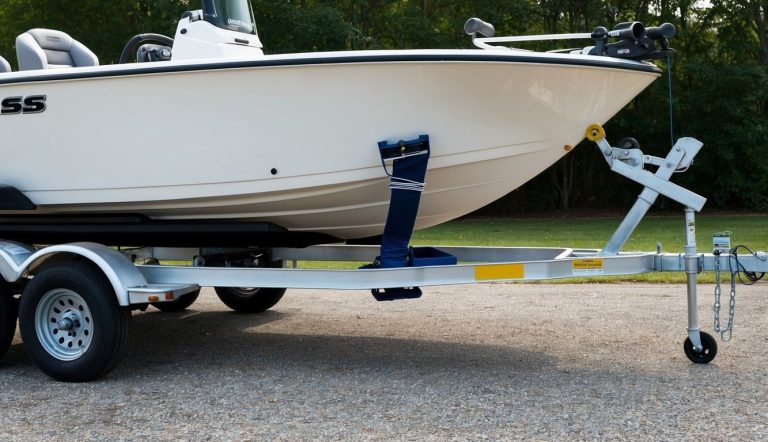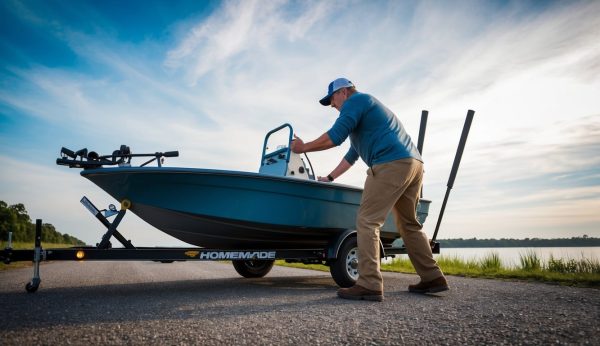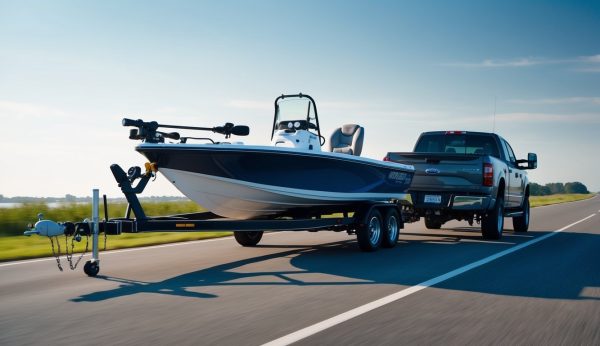Preparing for Bass Boat Transport
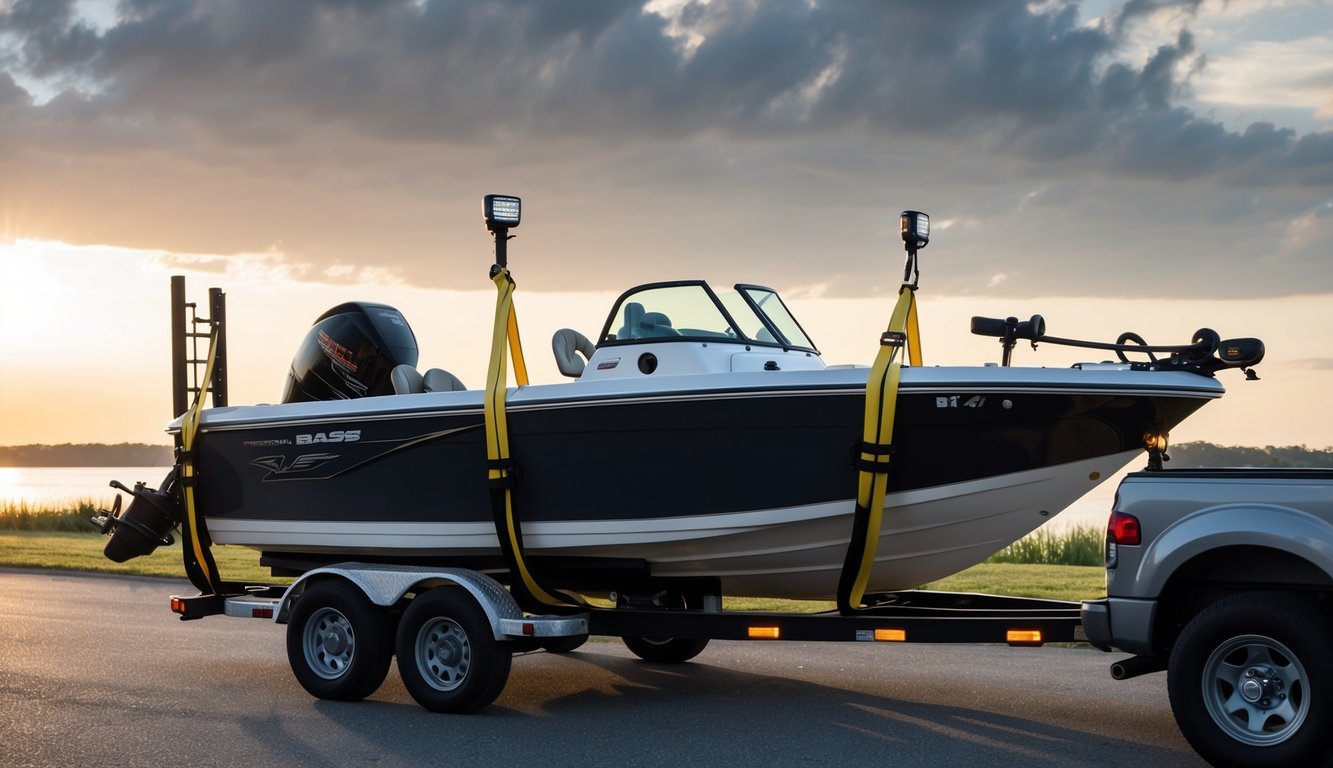
Proper preparation of your bass boat before transport ensures it arrives safely at its destination while avoiding potential damage. Before your boat is loaded, you’ll need to complete several important tasks.
Cleaning and Maintenance Pre-transport
- Start by thoroughly cleaning your boat inside and out. Remove all dirt, debris, and aquatic vegetation that could spread invasive species or cause damage during transport.
- Empty all fuel, water, and waste tanks before transportation. Fuel should be reduced to 1/4 tank or less to minimize weight and prevent spills. Don’t forget to remove all drain plugs from the hull to prevent water accumulation.
- Disconnect the battery and secure all electrical connections. Check your boat for any maintenance issues that should be addressed before shipping. Repair any loose fittings or components.
- Take clear photos of your boat from multiple angles to document its pre-transport condition. This provides evidence of the boat’s state should any damage claims arise later.
Securing Loose Items and Accessories
Remove all personal belongings and loose items from your boat before transport. This includes fishing gear, electronics, safety equipment, and any removable accessories.
Secure or remove:
- Fishing rods and tackle
- GPS units and other electronics
- Life jackets and safety equipment
- Coolers and storage containers
- Anchors and other heavy items
For items that must remain, use proper tie-downs and padding to prevent movement and damage. Wrap delicate components like windshields and electronics with bubble wrap or blankets for extra protection. Lower and secure trolling motors in their travel position. Remove or properly fasten boat covers to prevent flapping during transport. Some transporters recommend shrink-wrapping for long-distance shipping.
Choosing the Right Trailer
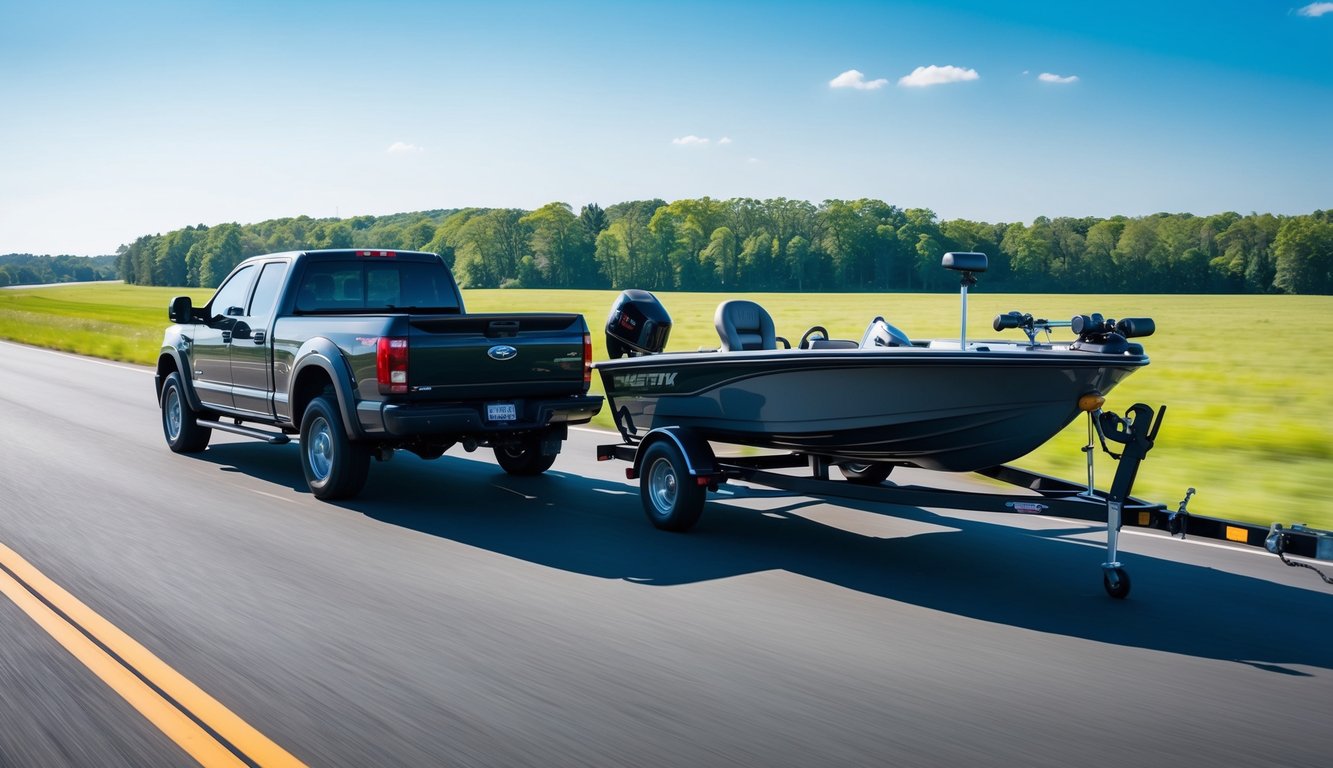
Selecting the appropriate trailer for your bass boat is crucial for safe transportation and longevity of your investment. The right trailer provides proper support and makes loading and unloading easier.
Types of Trailers for Bass Boats
- Bunk trailers are the most common option for bass boats. They use carpeted wooden bunks to support the hull. These trailers are more affordable due to their simplistic design with fewer moving parts, resulting in less maintenance over time.
- Roller trailers feature cylindrical rollers that make loading and unloading easier, especially in shallow launch areas. They’re ideal if you frequently launch in locations with gradual slopes.
- When selecting a trailer, ensure it’s rated for at least 15% more than your boat’s fully-loaded weight. This provides a safety margin for gear and fuel.
- Width matters too. Your trailer should be wide enough to safely support your boat and provide stability during transport. A proper fit prevents excessive movement while trailering.
Trailer Tires and Maintenance
- Proper tire maintenance is essential for safe trailering. Always check tire pressure before each trip – underinflated tires can lead to blowouts and handling issues.
- Inspect your tires regularly for wear patterns and cracking. Even if tread looks good, replace tires every 3-5 years as rubber deteriorates with age and exposure.
- Consider upgrading to radial tires for better heat dissipation on long trips. They typically last longer than bias-ply tires and provide smoother towing.
- Before any journey, check your safety chains and hitch connections. Ensure the hitch ball is tight and properly sized for your trailer.
- Maintain your wheel bearings by repacking or replacing them annually. Neglected bearings can fail catastrophically, potentially damaging your boat and creating road hazards.
Trailering Safety and Techniques
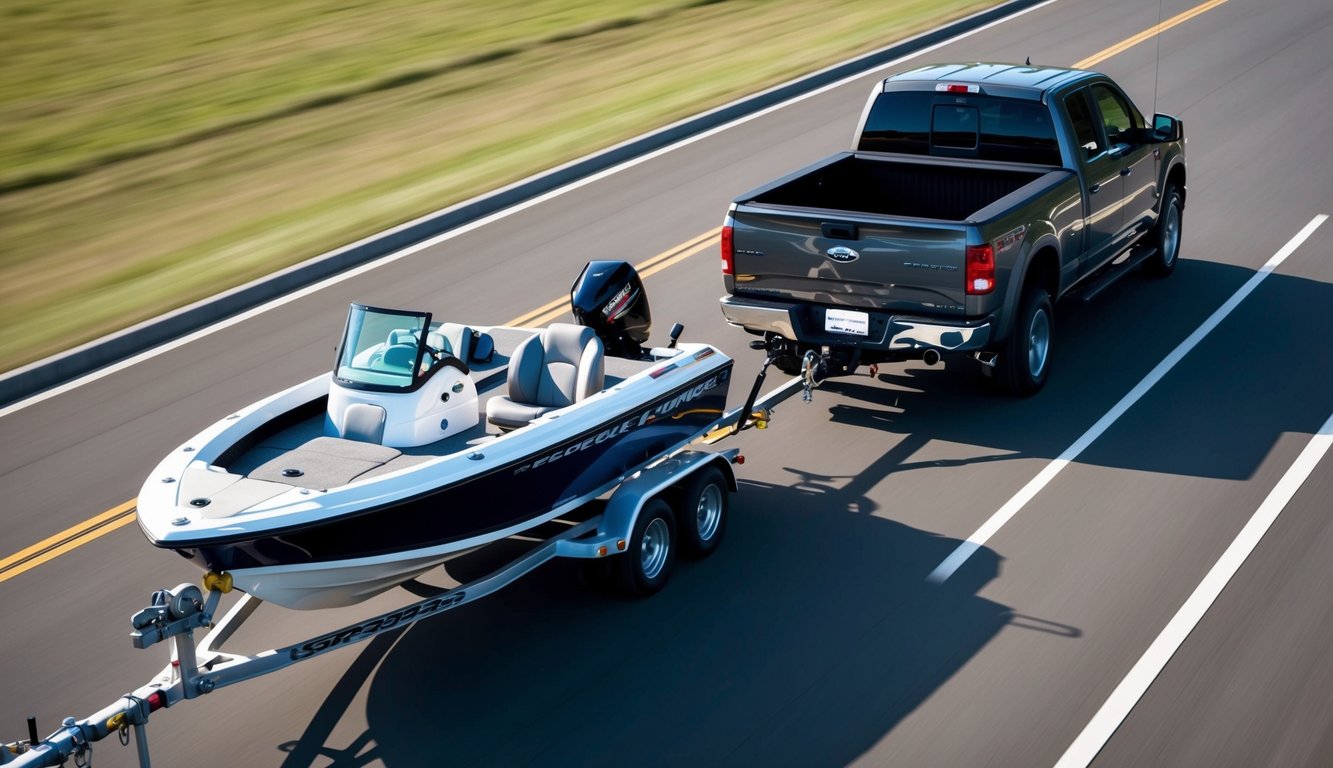
Safely transporting your bass boat requires proper trailer setup and smart driving habits. These fundamentals will protect your investment and ensure everyone stays safe on the road.
Attaching and Securing the Boat on the Trailer
Always start by properly centering your boat on the trailer. The weight should be evenly distributed with about 60% of the weight on the front half of the trailer. Secure the boat to the trailer using multiple tie-down straps at both the bow and stern. The bow should be secured with a winch and safety chain to prevent shifting during transport.
Pre-departure checklist:
- Check that the trailer coupler is fully seated and locked on the hitch ball
- Connect and cross safety chains between the vehicle and trailer
- Verify all lights are working properly
- Ensure trailer wheel bearings are properly greased
- Remove the boat cover before trailering to prevent damage
Make a full pre-tow safety inspection of your entire rig before every trip.
Safe Driving Practices with a Boat Trailer
Towing a bass boat requires adjusting your normal driving habits. Always maintain extra following distance and plan for significantly longer stopping distances. When turning, swing wider than normal to accommodate the trailer’s tracking path. Take corners slowly to prevent swaying.
Smart driving techniques:
- Avoid rapid acceleration or “jackrabbit” starts
- Brake earlier and more gradually than usual
- Check mirrors frequently to monitor trailer behavior
- Keep speeds moderate, usually 5-10 mph below posted limits
- Be especially cautious in high winds which can affect trailer stability
Practice backing up in an empty parking lot before your trip. Remember to turn the steering wheel in the opposite direction you want the trailer to go. When parking, try to find pull-through spots that don’t require backing up. Always chock the trailer wheels when parked on any incline.
Utilizing Professional Boat Transport Services
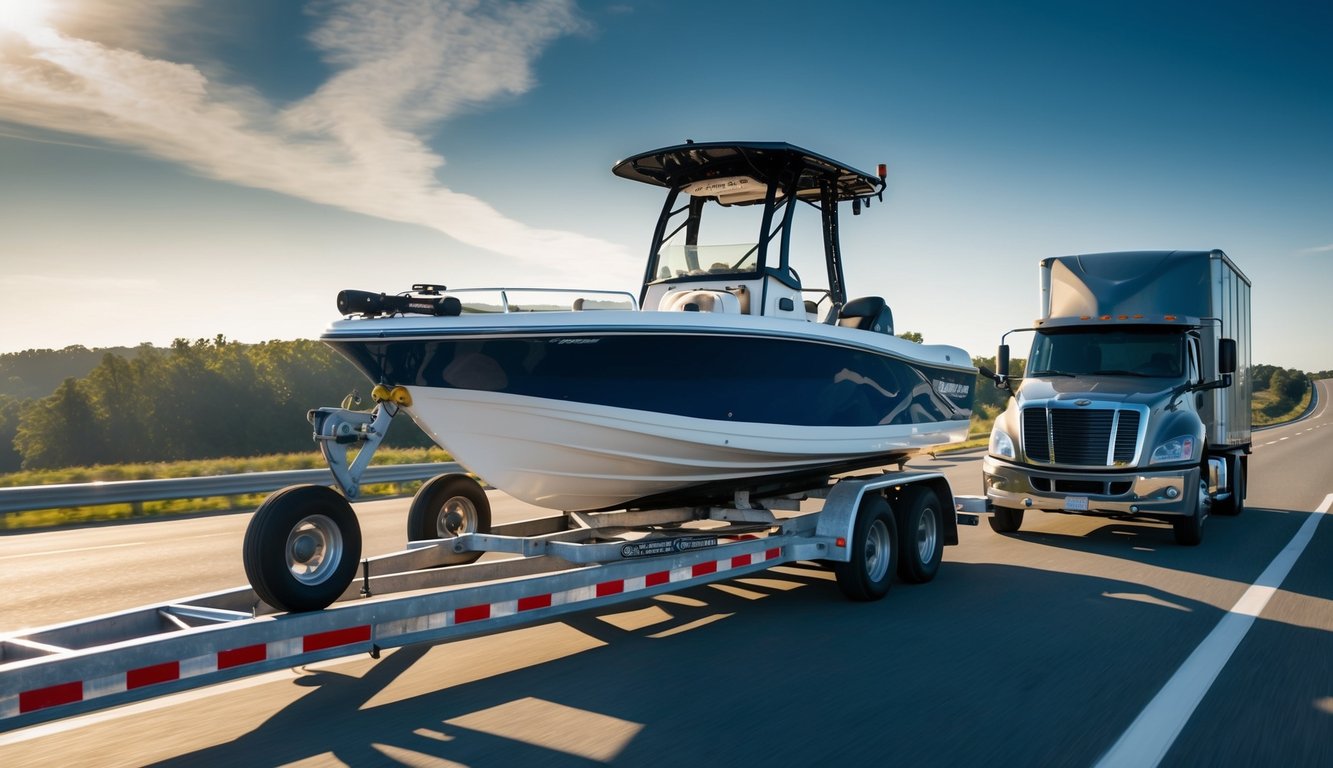
Professional boat transport services can save you time, reduce stress, and ensure your bass boat arrives safely at its destination. These specialized services handle everything from loading to securing and delivering your valuable watercraft.
When to Choose Professional Services
- Professional transport makes sense when moving your bass boat long distances. If you’re relocating more than 500 miles away, hiring experts is often more practical than towing it yourself.
- Boat transport services are also ideal when you lack proper towing equipment or experience. Not everyone has a suitable vehicle or trailer to safely move a bass boat.
- Consider professionals when time constraints are an issue. Self-transport requires planning, overnight stays, and significant time on the road.
- Weather concerns also warrant expert help. Professional transporters have experience navigating difficult conditions and can better protect your boat during transit.
- If your boat is particularly valuable or oversized, specialized transporters can provide secure transportation with proper equipment that you might not have access to.
How to Select a Boat Shipping Company
- Start by verifying credentials and insurance. Legitimate transporters should have proper licensing, insurance coverage, and verifiable business information. Ask for their USDOT number and check their safety record.
- Read customer reviews and seek recommendations.
- Request detailed quotes from multiple companies. Compare prices, but don’t automatically choose the cheapest option. Look for value and what’s included in the price.
- Ask specific questions about their equipment and methods. Professional transporters should use specialized boat trailers or cradles for secure transport.
- Confirm their loading and securing procedures. Good companies will discuss how they’ll protect your boat during transit, including tie-down methods and weather protection.
- Check if they offer tracking services so you can monitor your boat’s journey. This provides peace of mind and keeps you informed about delivery timing.
Budgeting for Boat Transport
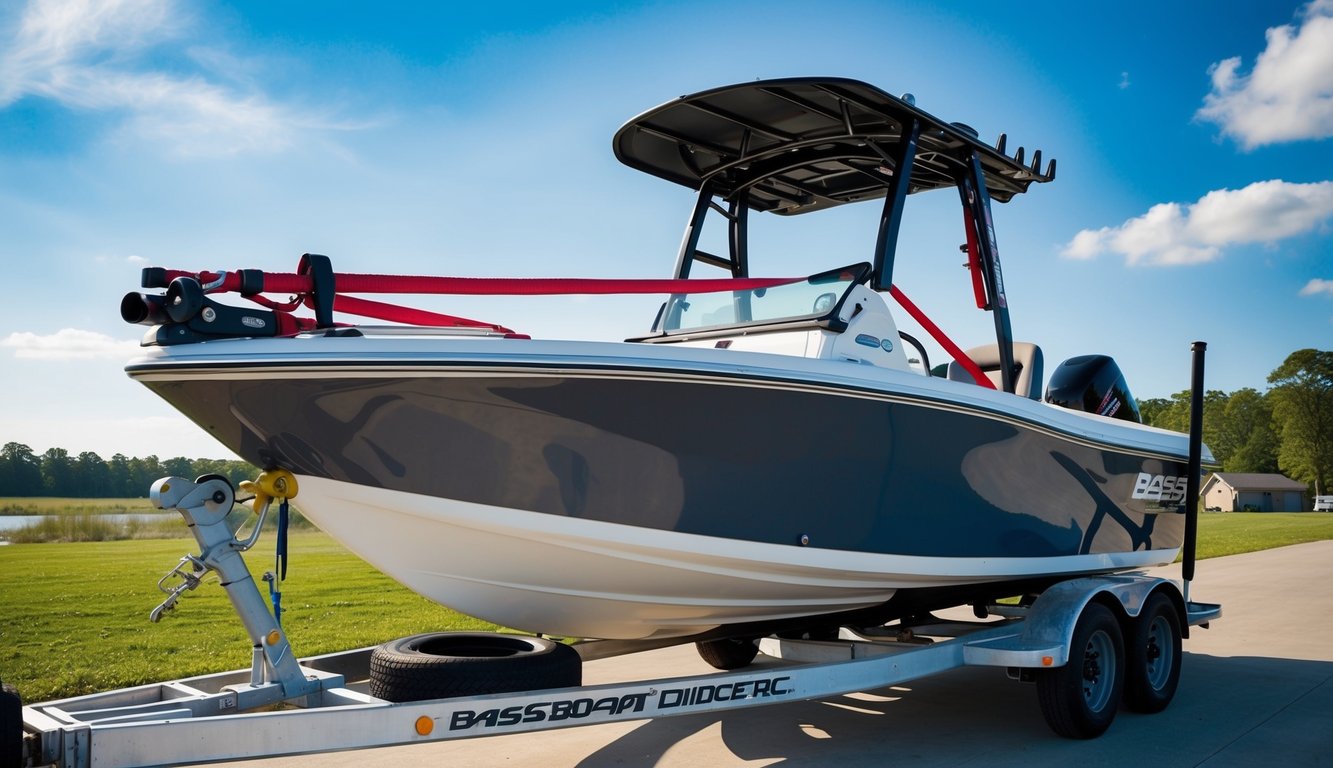
Understanding the costs involved in bass boat transportation helps you plan effectively and avoid unexpected expenses. The right preparation can save you hundreds or even thousands of dollars.
Understanding Costs and Fees
Bass boat transport costs typically range from 1.25 to $15 per mile, depending on the size of your boat and the distance traveled. For a complete transport, you might pay anywhere from $1,000 to $5,000, with one example mentioning $2,300 with the owner’s trailer.
Several factors affect your final price:
- Boat dimensions: Larger boats cost more to transport
- Distance: Longer trips mean higher total costs
- Transport type: Open vs. enclosed trailer
- Timing: Rush deliveries cost more
- Accessibility: Difficult pickup or delivery locations add fees
Don’t forget to budget for permits, which vary by state. You’ll need to contact state transportation departments to learn about necessary permits for oversize loads.
Tips for Keeping Expenses Low
Compare quotes from multiple bass boat shipping companies before making a decision. Request detailed breakdowns of all fees to avoid hidden charges later. Some transporters offer significant discounts for flexible delivery dates.
Consider these money-saving strategies:
- Transport during off-season (fall/winter) when rates are lower
- Use your own trailer if it’s in good condition
- Meet the transporter at easily accessible locations
- Book well in advance (30-60 days) to avoid rush fees
- Bundle services if shipping multiple items
For shorter distances, you might save by hauling the boat yourself if you have a suitable vehicle and trailer. Remember to calculate fuel, lodging, and your time when comparing DIY to professional transport. Remove expensive electronics and personal items before shipping to reduce both weight and potential insurance costs.
